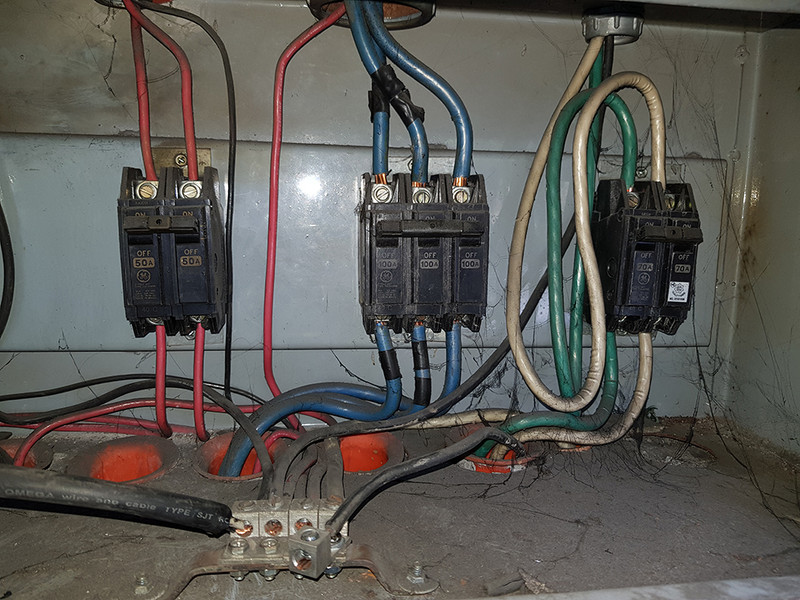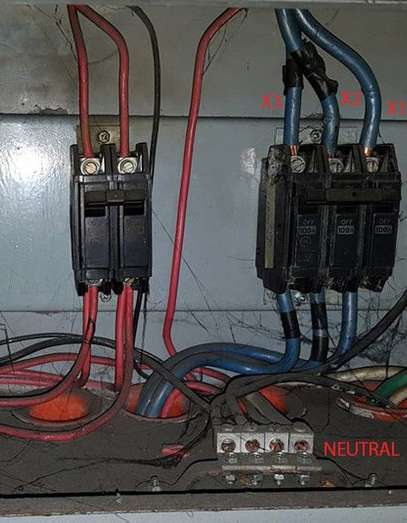mbrooke
Batteries Included
- Location
- United States
- Occupation
- Technician
What's feeding it is a breaker (right most) in the same main service panel where the arc flashed 3 phase breaker occurred (at the left side not shown). The reason the ground wire turned from black color to red is because halfway he spliced it. Now I'm afraid to let electrician even turn off any breaker without wearing any PPE:

What is below the panel?
This is especially after an expert wrote me in the arc flash forum: "What you describe is what Alicia Stoll's experiment was testing for and is known as the Stoll curve. It is equal to 1.2 cal/cm2 at 1 second and extends out to about 2.0 cal/cm2 at 2 seconds. This is the onset of a second degree burn. However your question is also talking about the onset of a second degree burn to a hand. IEEE 1584 uses the onset of a second degree burn to the face/chest area so the arc flash boundary would be defined at 18" away. In open air the incident energy quadruples if you half the distance. So 1.2 cal/cm2 at the face/chest would be 4.8 halfway down the arms. Let's just say that other than avoiding burns in the first place, we are never going to protect the hands."
What if I let the electrician wrap 2 shirts around his arms just to turn off one breaker in case the room or subpanel to it needs servicing. This would protect his arms in the event of spontaneous arc flash from the dusts (some may be conductive). Isn't it?
But there are thousands of service panels that don't encounter arc flashes. But in my case, the contractor omit to install the main breaker upstream of it and the 3 phase open delta just serve my office building and another besides it so the incident energy at the panel would be greater than any other place.
Well, I think with proper gear it wont be all the bad. You are only fed via two 75kva? pigs and there is distance between them. Is there a main breaker or 6 throws?










